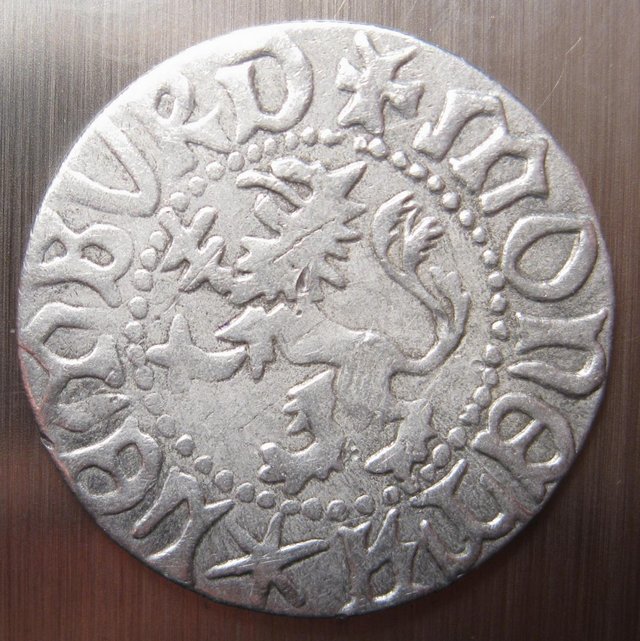History of the Lviv Mint No. 5 - Beginning of the study of the coins of the Lviv Mint - История Львовского монетного двора №5 - Начало изучения монет львовского монетного двора

The fascination with collecting coins has been known since the time of the Roman Empire, especially in Europe during the late Middle Ages.
Especially fashionable collection of coins became in 17-18 centuries, when almost every princely and noble family was proud of its collection of coins, as well as other works of art. In later times, in the 19-20th century, a lot of people took a great interest in numismatics since childhood, thereby saving from non-existence and melting, valuable copies of the numismatic heritage of the past.
The formation of collections required historical research, systematization and chronology of coins, the development of numismatic knowledge. In turn, the results of numismatic science have become an invaluable source of information for studying the economic development of society. Very often, coins were the only objective indicator in the dating of found treasures, archaeological excavations and the restoration of past events.
The study of the Lviv coins of the 14th and 15th centuries began rather late - moreover, during a large period of time they were generally unknown. The first mention of Galician-Russian coins is found in the book "On Lithuanian and Polish Rights" published in 1800 by the historian and coin collector Tadeusz Chatsky.
The incentive to study the coins of the Lviv mint was their appearance in Lviv merchants "antiquities" in 1826. July 14, 1826, the old tower of the Lviv city hall, built in the 15th century, collapsed. According to the construction traditions of the time, at the very top of the tower, in a metal ball, a large number of coins were hidden, luckily, for a coin of Casimir III, Louis Hungarian and Vladislav Jagailo, unknown at that time. Part of the coins that were in good condition, were bought from the traders, and the rest they managed to melt, not understanding the value of this treasure.
From this period, a careful study of the coins of the Lviv Mint began.
Taken from my blog : https://golos.io/@pioner777888

Увлечение коллекционированием монет, известно ещё с времён Римской империи, особенно оно распространилось в Европе во времена позднего средневековья.
Особенно модным собирание монет стало в 17-18 веках, когда чуть ли не каждый княжеский и дворянский род гордился своей коллекцией монет, также как и другими произведениями искусства. В более поздние времена, в 19-20 веке, очень много людей увлеклись нумизматикой ещё с детских лет, тем самым сохраняя от небытия и переплавки, ценные экземпляры нумизматического наследия прошлых лет.
Формирование коллекций требовало исторических исследований, систематизации и хронологизации монет, развития нумизматических знаний. В свою очередь, результаты нумизматической науки стали неоценённым источником информации для изучения экономического развития общества. Очень часто монеты являлись единственным объективным показателем в датировке найденных кладов, археологических раскопок и восстановления минувших событий.
Изучение львовских монет 14-15 века началось довольно поздно - более того, на протяжении большого отрезка времени о них вообще было неизвестно. Первое упоминание о галицко-русских монетах имеется в книге - "О литовских и польских правах" изданной в 1800 году историком и нумизматом - Тадеушем Чацким.
Стимулом к изучению монет львовского монетного двора стало их появление у львовских торговцев "стариной" в 1826 году. 14 июля 1826 года обрушилась старая башня львовской городской ратуши, построенной в 15 веке. Согласно со строительными традициями того времени, на самой вершине башни, в металлическом шаре было запрятано, на счастье, большое количество монет, среде них и о казались, неизвестные на то время, монеты Казимира III, Людовика Венгерского и Владислава Ягайло. Часть монет, которые были в хорошем состоянии, были выкуплены у торговцев, а остальные они успели переплавить, не понимая всей ценности этого клада.
С этого периода и началось тщательное изучение монет львовского монетного двора.
Взято из моего блога : https://golos.io/@pioner777888
... is it made of real Silver ?
Yes! It is made of silver of the highest standard!
... when did they start diluting the money with other metals ?
In the 16th and 17th centuries they began to add various impurities to silver. Coins with impurities in silver are already very poorly preserved in the ground. Sometimes you find such a coin, but it falls apart in your hands))
Monetary history is fascinating!
btw.. have you heard of Mike Maloney - he explains the hidden history of money. Great watch.
Ми якось з татом знайшли таку монету на полі, вона була повністю чорна, ми її почистили, але вона була сильно стерта і важко було роздивитись.
К сожалению, монеты этого периода очень часто встречаются в плохом состоянии, время их не пожалело))
Отлично.
Спасибо! Я старался))
@pioner888777 got you a $0.88 @minnowbooster upgoat, nice! (Image: pixabay.com)
Want a boost? Click here to read more!
Congratulations! This post has been upvoted from the communal account, @minnowsupport, by Паша from the Minnow Support Project. It's a witness project run by aggroed, ausbitbank, teamsteem, theprophet0, and someguy123. The goal is to help Steemit grow by supporting Minnows and creating a social network. Please find us in the Peace, Abundance, and Liberty Network (PALnet) Discord Channel. It's a completely public and open space to all members of the Steemit community who voluntarily choose to be there.
If you like what we're doing please upvote this comment so we can continue to build the community account that's supporting all members.